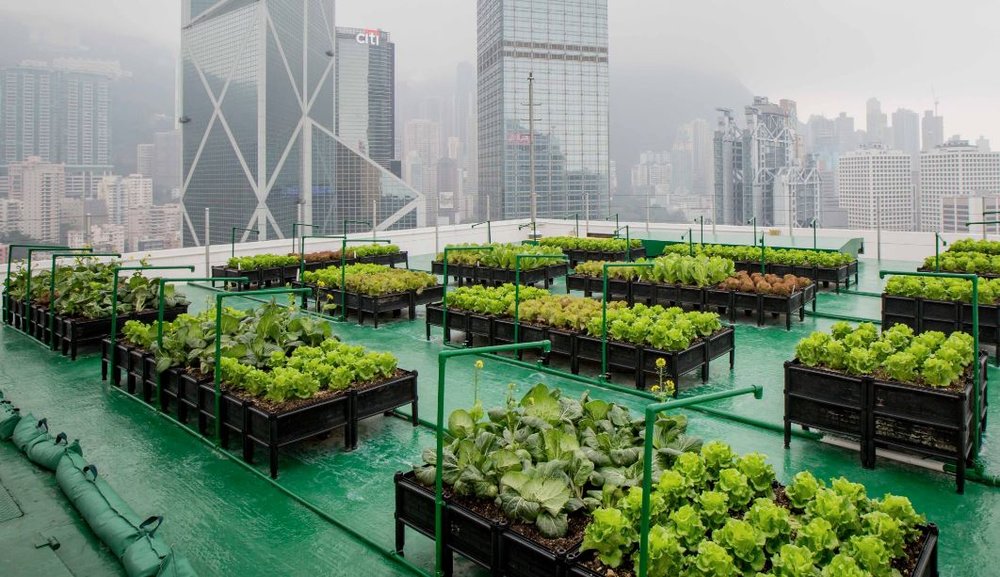Some Known Factual Statements About City Blooming
Table of ContentsCity Blooming Fundamentals ExplainedExcitement About City Blooming7 Simple Techniques For City BloomingSee This Report about City BloomingThe City Blooming PDFs

As you stroll the streets of the Bronx, Southside Chicago or East Oakland, you may see have actually even seen huge plots of ripening fruits and vegetables being harvested. What specifically are urban farms and community yards? Urban farming, city farming, or urban horticulture is the practice of cultivating, handling and distributing food in or around urban locations.
Generally, city farming as a technique is a larger investment than horticulture. There are countless extra hours spent into the minutiae of farming, from the plant strategy to the having a tendency of your beds. This moment commitment tackles a whole new significance once you recognize the goal that is being worked towards and committed, specifically that of acquiring a plentiful return of crops to be consumed.
A neighborhood yard is a solitary tract gardened collectively by a group of people. Neighborhood gardens use either specific or shared stories on personal or public land while generating fruit, vegetables, and/or plants grown for their eye-catching appearance. The standard version below is that a big group of people each add a fairly percentage of time to functioning their very own plot, and receive the fruits of their labor therefore.
Getting The City Blooming To Work

, and neighborhood companies by assisting them develop and grow their own gardens. The differences between neighborhood yard and urban ranch are nuanced, though in the end the same basic activity takes placefood plant cultivation but within various organizational structures - home and garden.
Urban farms are typically a lot more company and modern technology oriented, with the primary objective Going Here of making best use of returns and selling produce. Industrial city farms are often targeted at increasing manufacturing on generally little acreage with technologies in innovations such as aquaculture, hydroponics, and greenhouses and might partner with a commercial kitchen to produce locally-produced value-added products such as jams and sauces.
Some Known Incorrect Statements About City Blooming
The produce is typically expanded on a much smaller range and is taken home to eat at home or to share. By giving much required eco-friendly spaces in destitute, concrete metropolitan locations, they allow for the advantages of backyard gardening to those lacking backyards, and function as excellent examples of self-organization and area advocacy.
Some community yards, typically in urban areas, relocate into growing for commercial usage while some city farms open their land for more socially mindful advantages. No matter of just how you specify and distinguish the two, they are both positive pressures permanently in cities around America and the globe. They both supply much easier access to fresh, local produce; improve a community's visual; and function as excellent educational devices, educating individuals where their food originates from. Tiny Axe Peppers has already partnered with over 73 neighborhood gardens around the USA.
As all of Tiny Axe Peppers' warm sauces are sourced with peppers from area gardens, your acquisitions directly aid money these local projects (https://disqus.com/by/cityblooming/about/). Take part in the change by.
A friend of mine recently commented in a discussion concerning horticulture that "It's interesting, I've constantly assumed that farming as a technique is somewhat like gardening. There are similar aspects to both do not you think?" To the layman that remark from my pal would have gone without much idea, it seems sensible so why not take it because of this? As I spent even more and more time in my Urban Farming class I've come to understand that to state that horticulture is a miniature expansion of agriculture would be a little bit of stretch.
City Blooming Fundamentals Explained
They both rotate around the treatment of plants for some goal that can be sustenance, profit or simply the satisfaction of the craft. Furthermore they both call for a monetary financial investment in addition to a time investment, something that a lot of people in our quick paced life do not have a great deal of - home and garden.
We can see that the resemblances are plentiful, however are the differences sufficient to develop a distinction? As a trainee at NYU I have the chance to function with the leave It Better Foundation, a group that instructs basic nutrition and gardening to senior high school trainees. https://www.storeboard.com/cityblooming. This experience provided me an in-depth foray right into the world of amateur horticulture beyond what most individuals have been in contact with
Farming as a method is a larger financial investment than gardening. There are plenty of much more hours spent right into the minutiae of farming, from the crop strategy to the often tending of your beds.
The typical garden enthusiast goes about his tasks as a duty instead of a necessity and because of this identifies his or herself from the farmer. With this difference in hand, they are both comforting and soothing workouts that anybody can choose up, which by itself ought to be an ad for both.
Our City Blooming Ideas
Something went wrong - eco-friendly practices. Wait a moment and try again Try again